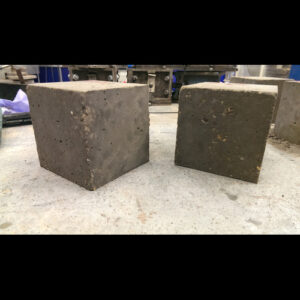Fibonacci Series in JavaScript: Exploring Different Approaches
The Fibonacci series is a well-known mathematical sequence that has intrigued mathematicians, scientists, and programmers for centuries. In this article, we will explore various ways to generate the Fibonacci series using JavaScript. Whether you’re a beginner or an experienced developer, understanding different approaches to solving this classic problem can deepen your understanding of programming concepts and algorithms.
Before we dive into the coding aspect, let’s quickly recap what the Fibonacci series is. The Fibonacci series in javascript is a sequence of numbers where each number is the sum of the two preceding ones, usually starting with 0 and 1. The sequence begins: 0, 1, 1, 2, 3, 5, 8, 13, 21, and so on. This sequence has fascinating applications in various fields, including mathematics, nature, and, of course, computer science.
Generating the Fibonacci Series: Different Approaches
# 1. Using Recursion
Recursion involves solving a problem by breaking it down into smaller instances of the same problem. When generating the Fibonacci series, a recursive approach can be elegant but may lead to performance issues for larger numbers due to redundant calculations.
“`javascript
function fibonacciRecursive(n) {
if (n <= 1) return n;
return fibonacciRecursive(n – 1) + fibonacciRecursive(n – 2);
}
// Generate and print Fibonacci series using recursion
const count = 10;
for (let i = 0; i < count; i++) {
console.log(fibonacciRecursive(i));
}
“`
# 2. Using Iteration
Iteration involves solving a problem by repeatedly applying a set of instructions. In the context of the Fibonacci series, an iterative approach can be more efficient than recursion, especially for larger numbers.
“`javascript
function fibonacciIterative(n) {
if (n <= 1) return n;
let fibPrev = 0;
let fibCurr = 1;
for (let i = 2; i <= n; i++) {
const temp = fibCurr;
fibCurr = fibPrev + fibCurr;
fibPrev = temp;
}
return fibCurr;
}
// Generate and print Fibonacci series using iteration
const count = 10;
for (let i = 0; i < count; i++) {
console.log(fibonacciIterative(i));
}
“`
# 3. Using Memoization
Memoization is an optimization technique that involves storing the results of expensive function calls and returning the cached result when the same inputs occur again. This approach can significantly improve the performance of recursive Fibonacci calculations.
“`javascript
const fibMemo = {};
function fibonacciMemoization(n) {
if (n <= 1) return n;
if (fibMemo[n]) return fibMemo[n];
fibMemo[n] = fibonacciMemoization(n – 1) + fibonacciMemoization(n – 2);
return fibMemo[n];
}
// Generate and print Fibonacci series using memoization
const count = 10;
for (let i = 0; i < count; i++) {
console.log(fibonacciMemoization(i));
}
“`
The Fibonacci series presents an interesting challenge that allows programmers to explore different programming concepts and algorithms. Whether you choose recursion, iteration, or memoization, each approach has its own advantages and trade-offs. Understanding these techniques not only helps you generate Fibonacci numbers but also strengthens your problem-solving skills and algorithmic thinking.
As you continue your programming journey, consider experimenting with these approaches and further optimizing them. The Fibonacci series serves as a gateway to deeper insights into algorithms and data structures, preparing you for more complex challenges in the world of programming.
Understanding the fibonacci series in javascript
The Fibonacci series in javascript is a sequence of numbers in which each number is the sum of the two preceding ones, usually starting with 0 and 1. The series goes as follows: 0, 1, 1, 2, 3, 5, 8, 13, 21, and so on. This seemingly simple pattern holds profound significance in various fields, from mathematics to nature, and of course, in programming.
Generating the fibonacci series in javascript:
JavaScript provides several ways to generate the Fibonacci series, each with its own merits and trade-offs. Let’s explore two common methods: using recursion and using iteration.
Method 1: Recursion
Recursion involves solving a problem by breaking it down into smaller sub-problems of the same type. In the context of the Fibonacci series, a recursive function can be used to calculate the nth Fibonacci number by recursively computing the sum of the (n-1)th and (n-2)th Fibonacci numbers.
“`javascript
function fibonacciRecursive(n) {
if (n <= 1) return n;
return fibonacciRecursive(n – 1) + fibonacciRecursive(n – 2);
}
// Generating Fibonacci series using recursion
const count = 10;
for (let i = 0; i < count; i++) {
console.log(fibonacciRecursive(i));
}
“`
Method 2: Iteration
Iteration involves solving a problem by repeatedly applying a set of instructions. The iterative approach to generating the Fibonacci series involves using a loop to calculate each Fibonacci number in sequence.
“`javascript
function fibonacciIterative(n) {
if (n <= 1) return n;
let fibPrev = 0;
let fibCurr = 1;
for (let i = 2; i <= n; i++) {
const temp = fibCurr;
fibCurr = fibPrev + fibCurr;
fibPrev = temp;
}
return fibCurr;
}
// Generating Fibonacci series using iteration
const count = 10;
for (let i = 0; i < count; i++) {
console.log(fibonacciIterative(i));
}
“`
Difference Between Null and Undefined in Javascript
In JavaScript, both `null` and `undefined` represent the absence of value, but they are used in slightly different contexts.
- `undefined`: When a variable is declared but not assigned a value, it is automatically initialized with `undefined`. It indicates the absence of a value or the lack of an assigned object or variable. For example:
“`javascript
let myVar;
console.log(myVar); // Outputs: undefined
“`
- `null`: It is a deliberate assignment representing the absence of value. It is often used to indicate intentional non-existence or to reset a variable. For example:
“`javascript
let myValue = null;
console.log(myValue); // Outputs: null
“`
It’s important to note that while `null` and `undefined` are often used interchangeably, they have distinct purposes. Understanding difference between null and undefined in javascript can help you write more precise and meaningful code.
Conclusion
The Fibonacci series in JavaScript is a captivating mathematical concept that has found its way into the realm of programming through JavaScript. Whether you choose to generate Fibonacci numbers using recursion or iteration, JavaScript provides the tools to explore and implement this intriguing sequence. Moreover, understanding the difference between null and undefined in JavaScript helps ensure that your code is accurate and reflects your intentions. As you embark on your programming journey, take the time to experiment with the Fibonacci series and master its implementation in JavaScript – a skill that will undoubtedly enhance your coding prowess.











